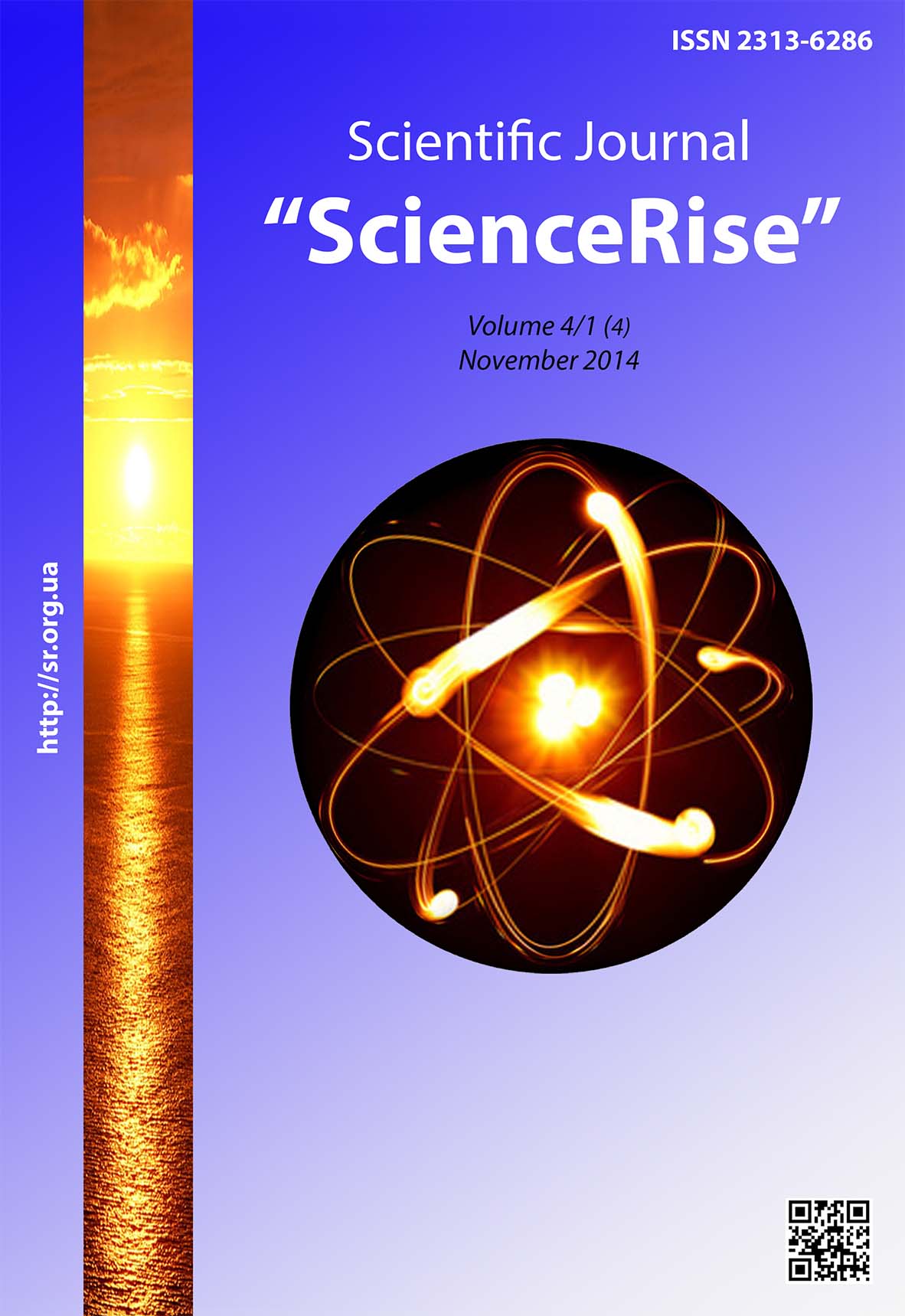Аллелопатическая активность листового опада древесных растений, почвы и копролитов в парках г. Днепропетровск
DOI :
https://doi.org/10.15587/2313-8416.2014.28956Mots-clés :
аллелопатические свойства, копролиты дождевых червей, почва, парковая зона, листовой опадRésumé
В работе рассматривается влияние аллелопатических свойств опада древесных растений и трофометаболической деятельности дождевых червей (Lumbricidae) на аллелопатические свойства почвы под древесными породами Acer platanoides L., Aesculus hippocastanum L., Ulmus minor Mill. в парках г. Днепропетровск. Установлено, что трофометаболическая деятельность червей положительно влияет на аллелопатический статус почв.
Références
Dabakhov, M. V., Titova, V. I. (2002). Some aspects of the technological transformation of urban soils. Soil resistance to natural and anthropogenic influences: Proc. Dokl. Intern. Conf. Moscow: RAAS, 34.
Eremchenko, O. Z., Shestakov, I. E., Kamenschikova, V. I. (2010). Ecological and biological properties of Perm urbanozem. Bulletin of Udmurt University. Biologiya. Earth Sciences, 4, 56–63.
Li, D. W. Shi, Y., Li, X. Y., Chen He, W. et al. (2008). Volatile organic compound emissions from urban trees in Shenyang, China. Botanical studies, 49, 67–72.
Nowak, D. J. (2002). The effects of urban trees on air quality. USDA Forest Service. 96–102.
Kul’bachko, Y. L. Didur, O. A., Pakhomov, A. E., Kryuchkova, A. I. (2014). Effect of coprolites of earthworms (Lumbricidae) on the bulk soils pH-buffering activity of forest land reclamation in the Western Donbass. Agricultural Chemistry and Soil Science. Interdepartmental thematic research collection. Kharkiv, 303–304.
Kulbachko, Yu., Loza, I., Pakhomov, O., Didur, O. (2011). The zoological remediation of technogen faulated soil in industrial region of Ukraine steppe zone. Sustainable Agricultural Development: recent approaches in resources management and environmentally balanced production enhancenment. Dordrecht, London, New York: Springer. Chapter 7. 115–123. doi: 10.1007/978-94-007-0519-7_7
Tomati, U., Grappelli, A., Galli, E. (1988). The hormone-like effect of earthworm casts on plant growth. Boil. Fertil Soils, 5 (4). 288–294. doi: 10.1007/bf00262133
Nielson, R. L. (1965). Presence of Plant Growth Substances in Earthworms demonstrated by Paper Chromatography and the Went Pea Test. Nature, 208 (5015), 1113–1114. doi: 10.1038/2081113a0
Blouin, M., Hodson, M. E., Delgado, E. A. (2013). A review of earthworm impact on soil function and ecosystem services. J. Europ. J. Soil Sci., 64 (2), 161–182. doi: 10.1111/ejss.12025
Kiss, S. (2000). Soil Enzyme Activities as Influenced by Earthworms. Studia universitatis babe ş -bolyai biologia. Anul, XLV, 3–38.
Edwards, C. A., Fletcher, K. E. (1988). Interactions between earthworms and microorganisms in organic-matter breakdown. Agric. Ecosyst. Environ, 24 (1-3), 235–247. doi: 10.1016/0167-8809(88)90069-2
Atiyeh, R. M., Lee, S., Edwards, C. A., Arancon, N. Q., Metzger, J. D. (2002). The influence of humic acids derived from earthworm-processed organic wastes on plant growth. Biores. Technol., 84 (1), 7–14. doi: 10.1016/s0960-8524(02)00017-2
Kuznetsov, V. V., Dmitriev, G. A. (2006). Plant Physiology: A Textbook. Moscow: Higher. school. 742.
Baranetsky, G. G. (1990). Chemical interaction of woody plants. Lviv: Svit., 160.
Grodzinsky, A. M. (1973). Fundamentals of chemical interactions of plants. Kyiv: Science Opinion. 206.
Matveev, N. M. (1994). Allelopathy as a factor in environmental protection. Samara: Samara publishing house, 206.
Eremenko, Y. A. (2012). Allelopathic properties of adventive species of trees and shrubs. Industrial botany, 12, 188–193.
Clarke, J. D., Volko, S. M., Ledford, H., Ausubel, F. M., Dong, X. (2000). Roles of Salicylic Acid, Jasmonic Acid, and Ethylene in cpr-Induced Resistance in Arabidopsis. Plant Cell, 12 (11), 2175–2190. doi: 10.1105/tpc.12.11.2175
Pakhomov, O. E., Didur, J. A., Kul’bachko, Y. L., Loza, I. M. (2010). Ecochemistry aspects of existence invertebrates in soil: methods of study: teach. guidances. Dnipropetrovsk: DNU publishing, 176.
Téléchargements
Publié-e
Numéro
Rubrique
Licence
(c) Tous droits réservés Анжелина Илларионовна Крючкова, Юрий Люцинович Кульбачко 2014

Cette œuvre est sous licence Creative Commons Attribution 4.0 International.
Our journal abides by the Creative Commons CC BY copyright rights and permissions for open access journals.
Authors, who are published in this journal, agree to the following conditions:
1. The authors reserve the right to authorship of the work and pass the first publication right of this work to the journal under the terms of a Creative Commons CC BY, which allows others to freely distribute the published research with the obligatory reference to the authors of the original work and the first publication of the work in this journal.
2. The authors have the right to conclude separate supplement agreements that relate to non-exclusive work distribution in the form in which it has been published by the journal (for example, to upload the work to the online storage of the journal or publish it as part of a monograph), provided that the reference to the first publication of the work in this journal is included.

